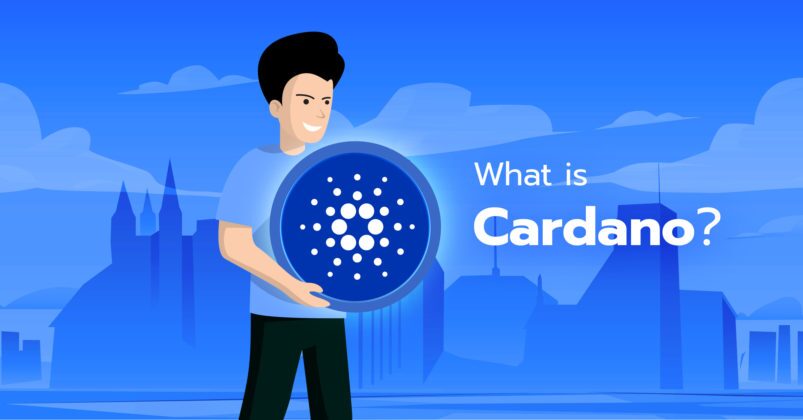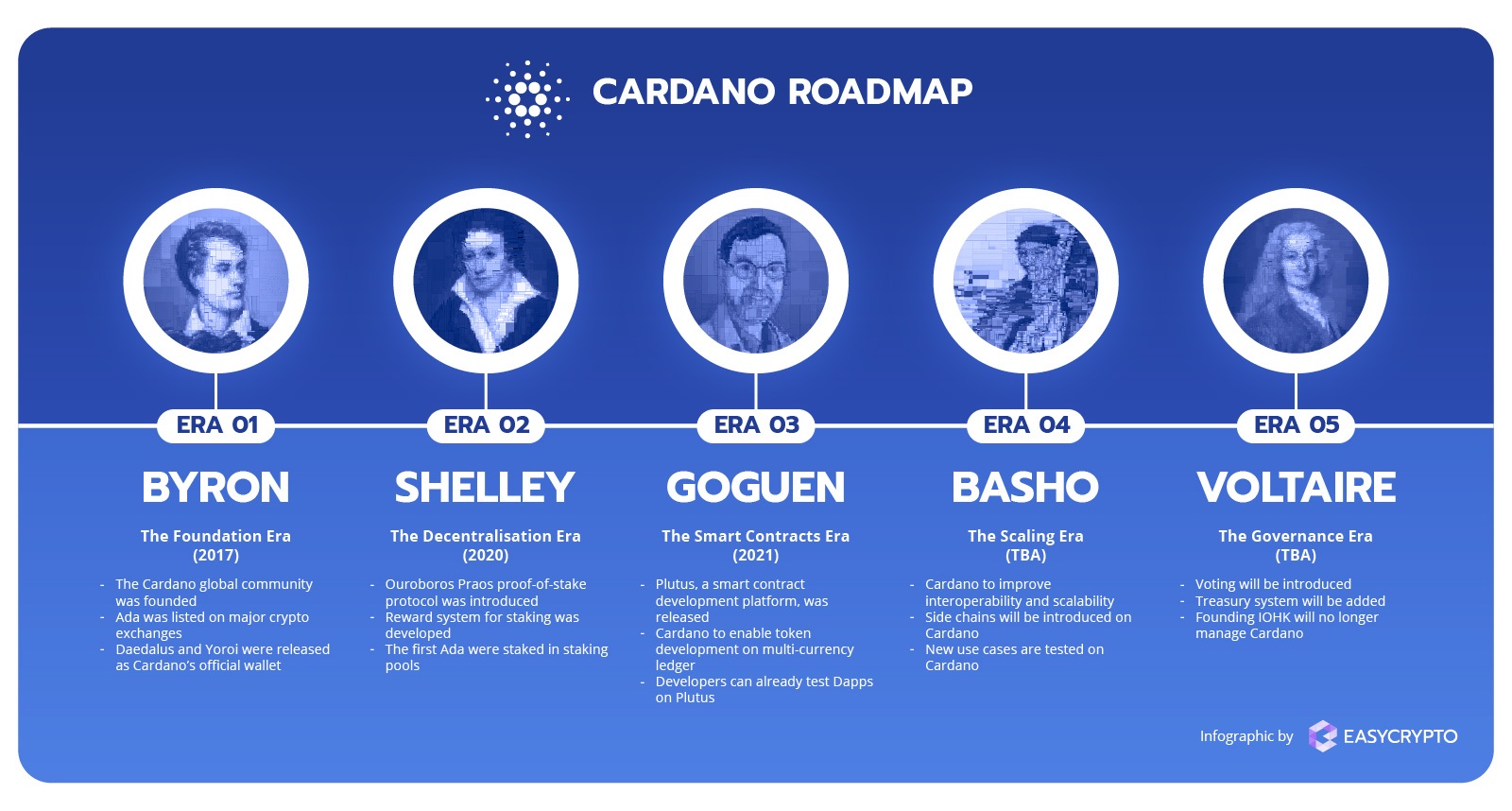What is Cardano? How to Buy ADA in NZ?
Every design decision for Cardano was a result of years of observation and experimentation. This ensures that Cardano can avoid potential and unanticipated weaknesses.


First-movers always make history. We see this in Bitcoin, being the first decentralised cryptocurrency to introduce a global trustless ledger powered by blockchain technology. We see this again in Ethereum, being the first to introduce smart contracts.
Now, Cardano is set to make history in the crypto space with its revolutionary approach to solving the fundamental obstacles in blockchain technology. So, what is Cardano and what does it offer that other blockchains don’t?
New to crypto? Learn the basics.
What is Cardano?
Cardano is a blockchain platform that operates fully with a proof-of-stake protocol since it was made publicly available. It is the first blockchain that was founded on peer-reviewed research and is continuously developed through a rigorous academic approach.
Every design decision for Cardano was a result of years of observation and experiments. The team behind Cardano had meticulously considered the current and potential weaknesses that have plagued all pre-existing blockchains.
They attempted to make a better system, promising a third-generation blockchain technology that improves upon and combines the best of Bitcoin, Ethereum, and many altcoins that came before Cardano.
The native coin of Cardano is called ADA, named after Ada Lovelace, a mathematician who wrote the first machine algorithm in the 1840s.
Like Bitcoin, ADA can be used as a medium of exchange, however, its most common use cases at this point are as a token for governance and as a staking asset, which is central to Cardano’s proof-of-stake system.
The proof-of-stake protocol is thought to be more efficient compared to the proof-of-work protocol, as you shall see later in this article.
Related: What is Proof of Stake?
What does Cardano have to offer?
Cardano is among the few blockchains whose team members had once worked on Ethereum together with Vitalik Buterin.
Cardano’s founder, Charles Hoskinson, explained that while Ethereum has offered more flexibility to blockchain technology than just to transact, it has suffered issues inherited from its first ancestor Bitcoin.
1. Scalability
As more people join the Bitcoin and Ethereum network, transaction speeds drop and more transactions become delayed, while transaction fees increase. The network has always been dependent on a single blockchain, so the blockchain’s limited bandwidth is increasingly overwhelmed by requests.
‘Gas’ is the Ethereum fee token used to pay miners to create new blocks of transactions securely with their machine’s computing power. However, at the time of writing, the average Gas fee has increased by 987% in one year.
Just like Bitcoin miners, miners of Ether require special hardware in order to compete with other miners in creating the next block (and earn block rewards), using a protocol called proof-of-work. To solve this issue, Ethereum is slowly moving towards a more efficient proof-of-stake protocol, dubbed Ethereum 2.0 or ETH2.
Since the beginning, Cardano was built to run parallel blockchains, and that a slot leader (a randomly selected active network participant with an ADA stake) can maintain multiple blockchains simultaneously, increasing the processing bandwidth.
Each blockchain communicates and verifies each others’ data, ensuring that all blockchain parallels remain as immutable as if they were a single blockchain, like in the case of Bitcoin and Ethereum.
2. Governance
Lacking governance and upgrade possibilities, having been created by unidentifiable founders, Bitcoin will forever suffer from limited bandwidth, drawing large amounts of computing power just to keep the network live and secure.
This is why we see the creation of Bitcoin forks, such as Litecoin and Bitcoin Cash, by various groups of people who believe in different ideals about what a decentralised digital ledger should be.
Unfortunately, this had also occurred even with Ethereum, whose founders are well-known. Following the hack that resulted in the theft of 3.6 million ETH due to a faulty smart contract, the Ethereum community proposed a hard fork to invalidate the lost ETH coins and restore the correct balance.
The Ethereum community was polarized on the notion that code is law and that the blockchain is immutable. In the end, Ethereum Classic and the current version of Ethereum split for good.
Forks are not necessarily bad, especially if they are planned. The Cardano Foundation who oversees the gradual development of the Cardano project has publicly shared their five-era roadmap, and investors can anticipate massive updates to the blockchain, shifting Cardano closer to its fullest potential.

At the time of writing, Cardano has successfully solidified its smart contracts implementation in the Goguen Era, and is on its way to optimize the network for higher scalability and interoperability in the Basho Era.
Furthermore, in the last era of Cardano — Voltaire Era — Hoskinson and his team planned to introduce a decentralised voting and treasury system, for which to vote on proposals for future development of the network as well as reserve payment for slot leaders (block creators). This ensures a democratic yet decentralised system that governs Cardano.
3. Sustainability
Sustainability is also partly concerned how the network will work together with traditional institutions like the government and bank. Satoshi Nakamoto may have envisioned Bitcoin to be a currency that supports an anonymous and borderline anarchist economy — economic systems that exist without the state’s involvement.
In a keynote in January 2020, Hoskinson said, “It is also important to remember that all transactions live in a regulatory framework. Often they live in many regulatory frameworks.” So long as we rely on banks to facilitate transactions between most other people or organizations, it is difficult to move away completely from regulatory frameworks.
To ensure that Cardano can be adapted by as many people as possible, it has to be able to interact with traditional banks. There is always a story behind every transaction — who transfers how much to whom, when, where, and for what purpose? Sometimes governments are interested in this story, more so than simply the amount of value transferred.
All banks must comply with protocols such as Know Your Customer (KYC) and Anti-Money Laundering (AML). Cardano tries to balance the wishes of centralised authorities and the decentralised community by introducing transaction metadata — data about a specific transaction. Moreover, built into Cardano is code written in Haskell, a programming language typically used in critical systems in the banking industry.
It may seem as simple as attaching a note to the transaction, but the implication is massive. In our opinion, when massive adoption takes place and Cardano becomes even more integrated into our structured and governed lives, a sender may need to create metadata so that the recipient can claim the value received as a legitimate transaction.
Of course, the exact mechanism for this is not yet known. We will have to see how governments react to Cardano when it reaches critical mass adoption. Currently, just like any other cryptos, ADA is nothing more than a tradeable asset and owners must follow the corresponding tax regulations.
What are the future prospects of Cardano?

If you had been following the crypto space, you may point out the fact that Cardano is not the first to implement proof-of-stake, parallel blockchain technology, decentralised governance, and support for compliance with regulations.
In fact, Peercoin and NXT were among the very first to adapt to a proof-of-stake protocol. Polkadot has extensively used parallel blockchain technology longer than Cardano.
Tezos was the first to develop an advanced self-amending governance protocol, and Ripple is a well-known blockchain that was built for financial institutions (most commonly banks) and makes it easy for the institutions to comply with KYC and AML protocols.
Cardano may not be the first to implement all of these advanced features, but its creators have spent years researching and testing out the best way to implement all of these features in the most efficient and optimised way possible.
You can say that it is the first crypto that was developed and peer-reviewed by experts around the world, with various university involvement and support.
This makes Cardano fundamentally more secure, attracting both conservative and risk-taking investors, as well as developers that are ready to jump in on the blockchain to support their decentralised apps.
Cardano already has a large follower base, ready to profit from the increasing value of ADA and the blockchain itself. Each update generates more confidence in the project, and each day brings The Cardano Foundation, Charles Hoskinson, and his team closer to the crypto world that they have envisioned.
How to Buy Cardano (ADA) in NZ?
With so much going for it, Cardano is set to be one of the top-performing altcoins in the crypto space. For those of you who are looking to add another altcoin to your portfolio, Cardano is an excellent choice.
So, how do you go about buying Cardano? and is it a good investment?
When you invest in Cardano, you are essentially investing in the potential of what Cardano can truly be once its infrastructure is fully running and the technology matures. And with the roadmap that the Cardano Foundation has laid out, it’s only a matter of time.
Here at Easy Crypto New Zealand, we have Cardano (ADA) along with 160+ cryptocurrencies. We are a non-custodial exchange, meaning we deliver your crypto assets directly to your wallet, where you hold true ownership of your assets unlike centralised exchanges.

Invest in Cardano: Buy ADA with Easy Crypto.
New to crypto wallets?
Here are some guides to get you started:
Cardano (ADA) is just one of over 160+ cryptocurrencies that we provide here at Easy Crypto. Our collection of crypto assets include:
- Stablecoins
- NFT Tokens
- Metaverse Tokens
- DEX (Decentralised Exchanges)
- DeFi (Decentralised Finance)
- And many more.
Check the rates: View the latest rates for ADA.
Follow our video guide below on how to buy cryptocurrencies with Easy Crypto NZ!
For a more detailed guide: Follow our step-by-step guide.
With that said, hope this article has given you valuable insight into the fundamentals of Cardano. Make sure to explore more altcoin topics on our hub site to learn more!
Share to
Stay curious and informed
Your info will be handled according to our Privacy Policy.
Make sure to follow our Facebook, Twitter, Instagram, and YouTube channel to stay up-to-date with Easy Crypto!
Also, don’t forget to subscribe to our monthly newsletter to have the latest crypto insights, news, and updates delivered to our inbox.
Disclaimer: Information is current as at the date of publication. This is general information only and is not intended to be advice. Crypto is volatile, carries risk and the value can go up and down. Past performance is not an indicator of future returns. Please do your own research.
Last updated July 6, 2023





